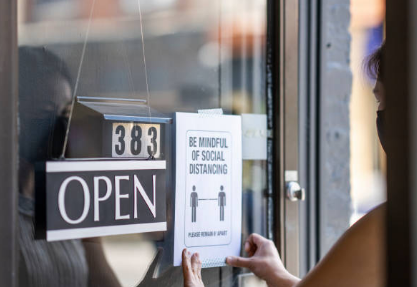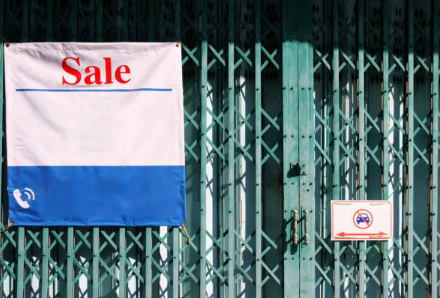An option price that will increase is the bet made by a buy-to-open order, which is placed at the start of the trade. Instead of purchasing an already-existing options contract, investors who want to start a new options contract use a buy to open. Contrarily, a trader who wants to close out an existing option contract and bets against the price of that option making a downward movement will place a buy-to-close order.
Table of Contents
Buy to Open Vs. Buy to Close Takeaways
Here are some of the key takeaways:
- Each option represents a contract between two parties
- Options give traders the right—but not the obligation—to buy or sell underlying assets at a pre-set price within a pre-determined period of time
- Each option can be seen as a sort of bet because parties are betting on the price direction in the future
- A premium is a deposit used to lock in the option for a buyer
- A strike price is a pre-determined price that both buyer and seller agree upon and construct their options around it
- There are two main types of options: call options and put options
- There are four main ways to trade in the options market: buying a call option, selling a call option, buying a put option, and selling a put option
- “Buy to open” means that a trader is opening a new agreement and buying a put or call option, while “buy to close” means that a trader is selling a put or call option and closing the contract
- “Sell to open” refers to a trader selling a put or call option but remaining within the contract, while “sell to close” refers to an original buyer of the option who sells either a call or put option and removes themselves from the agreement
- Options are not the same as stocks as they don’t represent an ownership
- Options are considered somewhat less risky than stocks because you can withdraw at any point
- However, options trading is speculative in its nature so it does come with a certain risk
What is Options Trading?
Buying and selling options on the market are referred to as options trading.
Traders have two options: they can make a contract to create a new option or they can trade their positions in an option that already exists.
As a result, several buyers and sellers can trade options within a predetermined time frame. So that the final owners can get a complete picture when the contract expires, the exchange will keep track of all the changes.
It’s important to know that this contract comes with a certain price, which is called a premium. A predetermined price acts as a kind of deposit. In order to secure their right to purchase at a specific price on or before the specified date, the prospective buyer may use it as a down payment.
For example, you can create a new option contract to say that You want to reserve the right to purchase shares of Google stock at the current price of $2,500 per share at any time during the next two years when the share price is expected to rise above $3,000. If you and another party (a seller who asserts that the share price will be lower) decide on a premium price for this contract of $10,000, you must pay that premium in order for the agreement to be enforceable.
Important note: Options are not the same as stocks. Although options are derived from stock, they do not represent ownership.

What is Buy to Open?
Buy-to-open orders are similar to buying long positions in stocks. In accordance with their trading hypothesis, a trader enters a buy order for either calls or puts. Going long on options can be a bearish trading strategy if puts are used, which is a significant distinction between buying stock and doing so. Purchasing open calls is a bullish tactic. When carrying out a buy-to-open order, calls or puts may be used.
An option position can be started by buying to open. Selling in order to open is the other. Depending on the type of option used, the trader who purchases an option to open either uses calls or puts and wagers that the option’s value will rise, which could be either a bullish or bearish bet. Open interest may rise as a result of buying to open because it occasionally generates a new option contract in the market.
When buying to open, a trader pays a premium. The premium paid, also known as a debit, is taken from the trader’s account in the same way that the value of a stock would be when purchasing shares.
Example of Buy to Open
A buy-to-open options strategy might be used by a trader who expects the price of XYZ stock to rise. They might buy call options or stock to accomplish that. The investor must first log into their brokerage account before going to the order screen. The trader has the option of either buying or selling to open when trading options.
Buying to open can use either calls or puts, and it may result in the creation of a new options contract in the market. Buying to open calls is a bullish bet while buying to open puts is a bearish one.
Assuming the trader is bullish, they purchase 10 call contracts on the XYZ stock with a January 2025 expiration date and a $100 strike price. The order type is “buy to open” and the trader also enters the option’s symbol along with the number of contracts to purchase. Here is what it might look like:
• Underlying stock: XYZ
• Action: Buy to Open
• Contract Quantity: 10
• Expiration date: January 2025
• Strike: $100
• Call/Put: Call
• Order type: Market
A trader may use a buy to open an options contract as a stand-alone trade or to hedge existing stock or options positions.
With buying to open, profits can be significant. While buying puts to open has a maximum profit when the underlying stock reaches zero, going long calls offers unlimited upside potential. However, there is a chance that the options will expire worthless if you purchase to open them.
What Does Buy to Close Mean?
The market’s supply of contracts can be decreased by buying to close options and exit an existing short options position. A trade that balances out a short position in options is buying too close. After a trader writes an option, a buy-to-close order is generated.
In contrast to a buy-to-close order, writing options involves collecting the option premium, also referred to as the net credit. By keeping as much premium between writing the option and buying to close as possible, the trader hopes to profit. The procedure is comparable to shorting a stock and then covering.
Example of Buy to Close
Let’s say a trader initiated a position by writing puts on the $100 per share XYZ stock. The trader adopted a neutral to bullish strategy by selling one options contract because they thought the price of the underlying stock would either stay the same or increase.
When a trader anticipates a decline in implied volatility, they may also sell options. The puts with a $100 strike price and a one-month expiration generated a $5 credit.

The XYZ stock trades near the same level as it did a month ago on the day before expiration; shares are currently at $101. Since the strike price of the put contract is below the stock price and there is not much time left before the delivery date, its value has fallen significantly. Buying to close at $1 the day before expiration allows the trader to make money.
A $4 profit was made by the trader who sold at $5 to open and then bought at $1 to close.
Differences Between Buy to Open Vs Buy to Close
A buy to open and a buy to hold have significant distinctions. buy to close order. Prior to starting to trade, it is crucial to have a solid understanding of the ideas and characteristics of the different order types.
| Buy to Open | Buy to Close |
|---|---|
| Creates a new options contract | Closes an existing options contract |
| Establishes a long options position | Covers an existing short options position |
| Has high reward potential | Seeks to take advantage of time decay |
| Can be used with calls or puts | Can be used with calls or puts |
Buy to Open Vs. Buy to Close
The phrase “buy to open” means that a trader is buying—opening up—either a put or call option.
The phrase “buy to close” means that a trader is selling—closing out—either a put or call option.
In other words:
- Buying to open means that you want to create (open) a new option: You will pay a premium price now to secure your position and have an option to do something later (before the contract’s expiration date)
- Buying to close means that you are trading your portion of an already existing option: You were previously paid to create that option, but now you are paying someone else to take your place until the contract expires
When you buy to open, you’re committing to a new option contract and securing your place within it.
You exit the current contract, close out your position, and eliminate your risk when you buy to close.
Sell to Open Vs. Sell to Close
The phrase “sell to open” refers to a trader (an original buyer of the option) selling a put or call option.
The phrase “sell to close” refers to a trader (an original buyer of the option) who sells a call or put option to close out a contract.
In other words:
- Selling to open means that you are selling an existing option you already have: You will get paid now and the buyer will hold that option, but your position within the contract will remain open to fulfill the contract’s rules if the buyer acts upon it before the expiration date
- Selling to close means that you are selling the contract to someone else: You bought the options previously and now you’re selling them to someone else to remove yourself from the contract

When you sell to open, you are still a party to the contract even though you are exchanging a portion of the shares that you had already purchased.
You sell your share of the stock and end the contract when you sell to close.
Understanding Buy to Open and Buy to Close
Let’s delve deeper into the methods and trading plans for options when executing buy-to-open vs. buy-to-closer orders.
Buy to Open
When creating a buy-to-open order, either calls or puts may be used. A trader typically has a bullish outlook on the direction of the underlying stock when trading calls. However, the trader may occasionally wager on changes in other variables, such as volatility or time decay.
A calendar spread is a strategy that takes advantage of time decay and higher implied volatility by buying to open later-dated calls while selling to open near-term calls. A stand-alone trade or a component of a larger, more intricate strategy can both involve buying to open.
Buy to Open Put
When used alone, buying to open a put options contract is a bearish move. When a trader is long the underlying stock, they frequently employ a protective put strategy. The purpose of buying to open a put in that scenario is to simply protect gains or stop further stock losses. A hedge is another name for this.
When a trader buys to open puts and has no other open positions, that trade is considered speculative. This trade is carried out by the trader when they anticipate a decline in stock price. After a buy-to-open order is filled, increases in implied volatility are also advantageous to the put holder.
Buy to Close
A short options trade is finished by a buy-to-close order. While buying to open can increase open interest, it can decrease it in the options market. When the option is repurchased for a lower cost than it was originally purchased, the trader makes money.
After writing an option, buying to close takes place. The trader aims to benefit from time decay when writing (or selling) an option. When used alone, that strategy can carry a high risk; without another hedging position, there could be significant losses. Writing puts is risky because the stock could fall to zero, making them quite valuable, while writing calls carries an unlimited risk.
Shorting Against the Box
Shorting against the box refers to a trading strategy where a trader holds both a long and a short position on the same asset. A trader can use this method to hold onto a position, such as being long a stock.
The motivation to add a bearish options position to an existing bullish equity position is frequently tax-related. A tax-saving play that also lowers risk is simply buying to open puts because selling highly appreciated shares can result in a sizable tax bill.
However, not all brokerage firms permit this kind of transaction. Additionally, if done incorrectly or if tax regulations change, the IRS might conclude that the strategy amounted to a stock sale that necessitated capital gains payments.
How to Use Buy to Open Or Buy to Close?
A trader must choose whether to use puts or calls to go long or short options. When buying to open, the goal is typically to profit from significant changes in the underlying stock, whereas when selling to open, the goal is frequently to benefit from time decay. After a sell-to-open order executes, traders frequently place a buy-to-close order. However, they may also choose to wait for the options to expire worthlessly.
The chance of a margin call is another thing to think about. It is possible for a trader to be forced to sell after writing options contracts by the broker or to buy to close at a significant loss. To satisfy a margin call, the broker may also request the deposit of additional funds or assets.
Do I Sell to Open Or Sell to Close?
“Sell to open” is an instruction to sell or short an option to open a transaction, while “sell to close” means the reverse: closing a transaction by selling an option purchased for the account.
Why is Closing and Opening Price Different?
On a typical trading day, supply and demand are in a constant state of flux as a result of changes in the stock’s price attractiveness. Closing and opening prices are not always equal because of these fluctuations.

Conclusion on Buy to Open Vs Buy to Close
The phrase “buy to open” refers to when an options trader opens a long position. A short options position is closed when a buyer is found. Knowing the distinction between “buy to open” and “open to buy,” buy to close is essential to successful options trading. These option orders enable traders to enter positions that correspond to a variety of bullish or bearish viewpoints on security.
Consider investing in options. Investors can trade options on the mobile app or web platform thanks to SoFi’s options trading platform’s simple and approachable design. Additionally, they can access the associated library of educational content on options to learn more.